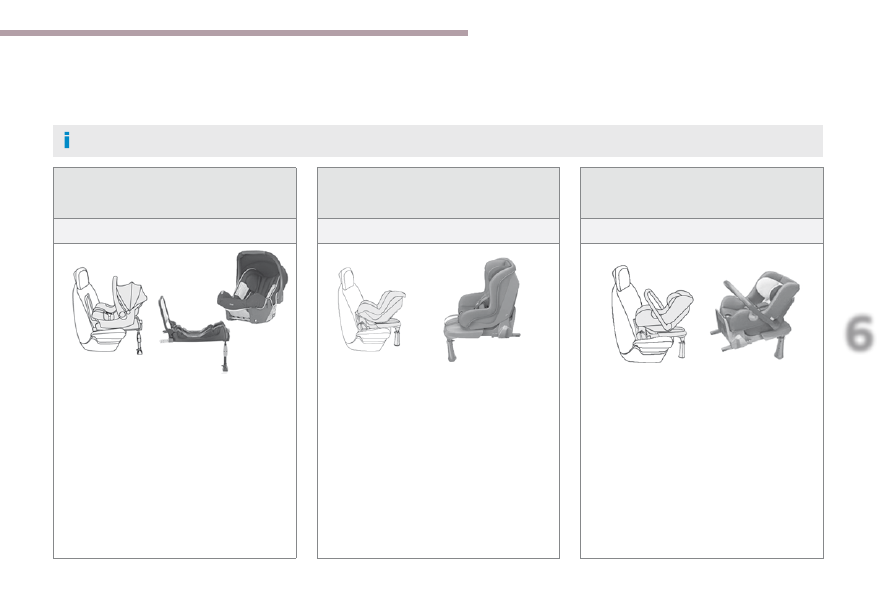Citroen C4 Picasso (2017 year). Instruction - part 17

255
6
Safety
C4-Picasso-II_en_Chap06_securite_ed02-2016
"RÖMER Baby-Safe Plus" and
its ISOFIX base
(size category: E)
Group 0+: from birth to 13 kg
Installed rearward facing using an ISOFIX
base which is attached to the rings A.
The base has a support leg, adjustable for
height, which sits on the vehicle's floor.
This child seat can also be secured with a
seat belt. In this case, only the shell is used
and attached to the vehicle's seat by the
three-point seat belt.
ISOFIX child seats recommended by CITROËN
CITROËN offers a range of ISOFIX child seats listed and type approved for your vehicle.
Refer also to the child seat manufacturer's fitting instructions for information on installing and removing the seat.
Baby P2C Mini and its ISOFIX base
(size categories: C, D, E)
Group 0+: from birth to 13 kg
Installed rearward facing using an ISOFIX
base which is attached to the rings A.
The base has a support leg, adjustable for
height, which sits on the vehicle's floor.
This seat can also be secured with a seat
belt.
In this case only the seat shell is used and is
attached to the vehicle's seat by the three-
point seat belt.
"Baby P2C Midi" and its ISOFIX base
(size categories: D, C, A, B, B1)
Group 1: from 9 to 18 kg
Installed rearward facing using an ISOFIX
base which is attached to the rings A.
The base has a support leg, adjustable for
height, which sits on the vehicle's floor.
This child seat can also be used forward
facing.
This seat can not
be secured with a seat
belt.
We recommend that you use the seat in
the rearward facing position up to the age
of 3 years.